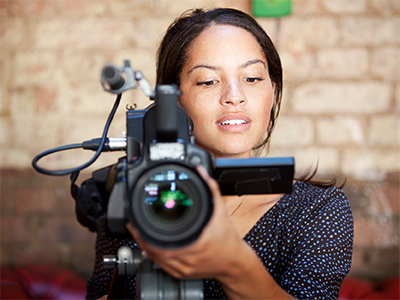How Legal Videography Improves Court Presentations and Proof
Wiki Article
Exploring the Mechanisms of Legal Videography: Unveiling Its Procedure in Shielding Genuine Aesthetic Testament for Judicial Procedures
In the world of judicial proceedings, the role of lawful videography stands as a foundation in protecting and providing aesthetic proof. As innovation proceeds to development, the devices behind legal videography have become progressively complex, offering a crucial layer of credibility to testimonies captured on video clip. By delving into the functional details of legal videography, one can discover the careful procedures that guard the integrity of aesthetic evidence offered in court rooms - Legal Videography. This exploration not only loses light on the historical development of legal videography yet likewise hints at the future fads that might better transform exactly how aesthetic testaments are upheld in the world of justice.Historic Evolution of Legal Videography
Checking out the historical progression of legal videography exposes a considerable change in the recording and presentation of aesthetic proof within the lawful landscape. In the past, legal proceedings heavily depended on composed transcripts and photos to document events and offer proof. With the development of video clip technology, the legal industry observed a paradigm shift in just how visual statement was captured and provided.The advancement of lawful videography can be mapped back to the late 20th century when advancements in video recording tools made it much more accessible for use in court rooms. This technological innovation not only boosted the precision and integrity of visual evidence but likewise changed the means situations existed to discretionary (Legal Videography). Lawyers started to acknowledge the persuasive power of video recordings in sharing emotions, nuances, and non-verbal cues that written records or photos alone might not record successfully

Modern Technology Improvements in Video Clip Paperwork
What vital technical advancements have changed video clip documentation in the lawful field? The lawful field has actually seen significant developments in video clip documents innovation that have improved the credibility and reliability of aesthetic proof in judicial proceedings.In addition, developments in video file encryption and watermarking technologies have strengthened the protection and tamper-proof nature of video proof, safeguarding it against unapproved changes or tampering. In addition, the advent of cloud storage remedies and remote gain access to capacities has streamlined the storage, retrieval, and sharing of video clip proof, facilitating seamless partnership amongst legal specialists and ensuring effective accessibility to crucial aesthetic testimonies when needed. These technical innovations in video clip documents have certainly transformed the lawful area, boosting the precision, integrity, and admissibility of aesthetic evidence in judicial proceedings.
Duty of Lawful Videographers in Courtroom Setups
The evolution of video clip documents innovation in the lawful area has demanded a critical duty for lawful videographers in courtroom setups, ensuring the honesty and dependability of visual testimonies provided during judicial process. Lawful videographers play a fundamental duty in capturing and preserving precise visual proof that can be critical in court cases. Their responsibility encompasses establishing equipment, taping proceedings, and generating high-grade videos that properly reflect the events in the courtroom.
In court room settings, lawful videographers have to stick to rigorous guidelines and criteria to preserve the credibility of the visual document. They must have an eager eye for detail and a detailed understanding of legal treatments to ensure that the video footage they record is a true depiction of the events that transpired. In addition, legal videographers commonly work carefully with legal teams to make certain that the video clip evidence straightens with the case's demands and can be properly presented in court to sustain the lawful arguments being made. In general, the duty of lawful videographers in court settings is indispensable in supporting the principles of justice and ensuring the openness of lawful proceedings.
Ensuring Admissibility and Integrity of Video Clip Proof
To maintain the reliability of visual evidence offered in lawful process, ensuring the admissibility and stability of video clip proof is a vital duty for legal videographers. Admissibility refers to the approval of proof by the court, and for video clip evidence to be acceptable, it has to meet certain requirements. Legal videographers play a crucial function in making certain that the videos they capture follow the guidelines of evidence, such as significance, credibility, and dependability.Stability of video evidence includes keeping the originality and precision of the video footage from the moment it is taped up until it exists in court. This consists of firmly saving the video clip data, recording the chain of custody, and preventing any meddling or modifications. Lawful videographers have to follow stringent procedures to guarantee the integrity of the video proof and protect against any kind of obstacles to its credibility.
Future Trends in Legal Videography
Offered the raising reliance on innovation in legal proceedings, lawful videographers are poised to welcome cutting-edge innovations shaping the future of aesthetic testimony capture and presentation. Among the popular trends imminent is the assimilation of online fact (VR) and boosted reality (AR) innovations right into legal videography. These innovations have the potential to revolutionize just how visual proof exists in courtrooms, enabling courts and judges to submerse themselves in the scene of the criminal offense or event.Additionally, making use of man-made knowledge (AI) algorithms for video analysis is expected to enhance the process of evaluating and analyzing huge amounts of video footage. AI can aid in identifying key moments, abnormalities, and patterns within videos, boosting the performance of legal investigations.

Conclusion
Finally, lawful videography has played a crucial duty in offering genuine visual proof for judicial proceedings. With technological advancements and the competence of legal videographers, the stability and admissibility of video clip evidence are ensured in court room setups. As lawful videography you could try these out continues to advance, it will be important to maintain standards that maintain the accuracy and reliability of aesthetic statement for the future of legal procedures.Analyzing the historic progression of legal videography discloses a considerable makeover in the capturing and presentation of aesthetic proof within the lawful landscape.The evolution of video paperwork modern technology in the lawful field has actually demanded an essential function for lawful videographers in courtroom setups, why not check here guaranteeing the stability and integrity of aesthetic statements presented during judicial procedures. Additionally, legal videographers frequently function very closely with lawful groups to make certain that the video clip proof aligns with the case's demands and can be efficiently provided in court to support the legal disagreements being made.To preserve the reputation of aesthetic proof provided in lawful proceedings, guaranteeing the admissibility and integrity of video evidence is an important obligation for legal videographers. As legal videography continues to evolve, it will be necessary to support criteria that preserve the precision and dependability of aesthetic testament for the future of legal procedures.
Report this wiki page